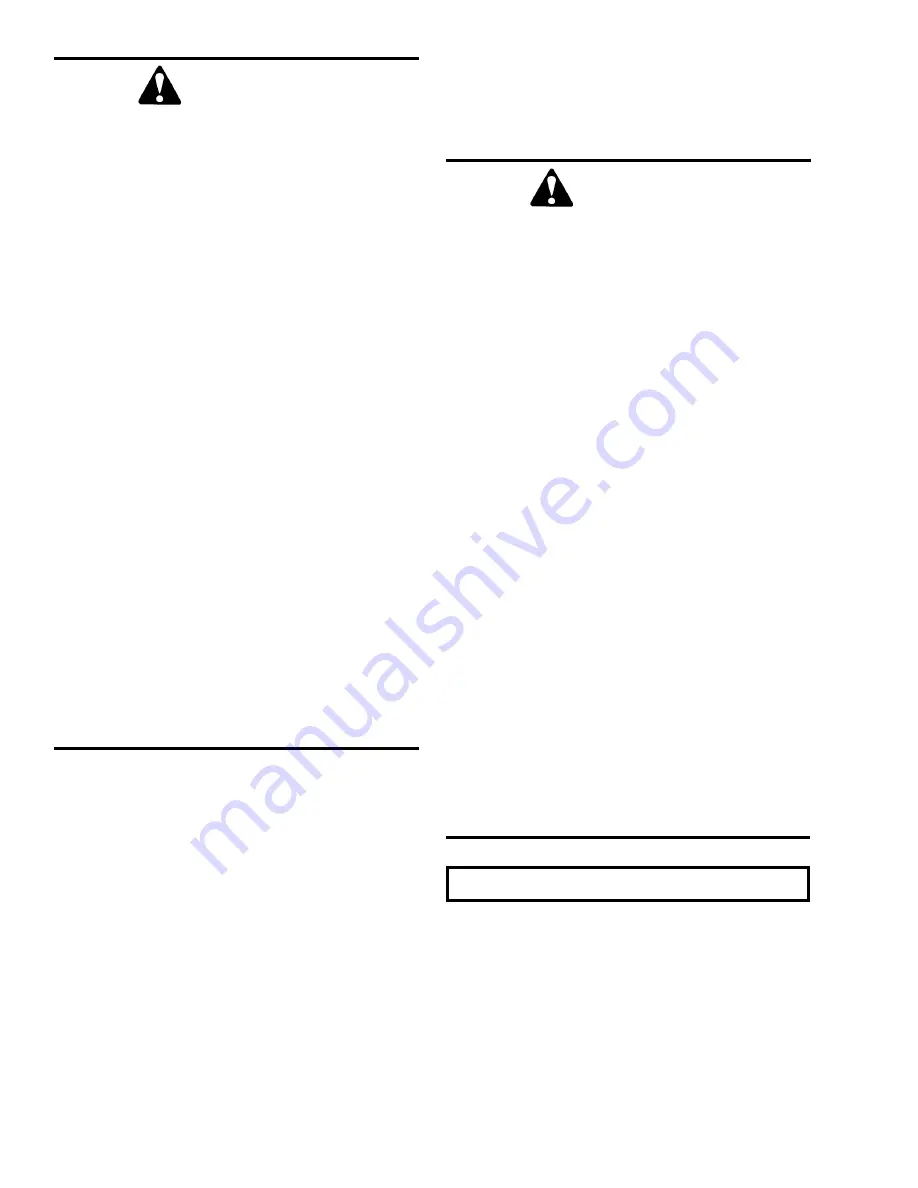
shields and covers in place? Do all controls function
smoothly and properly? Are there any abnormal vibra-
tions or noises? Are any hose or fitting connections
leaking? Is the engine exhaust color normal (light grey
or colorless)?
LUBRICATE GREASE POINTS
Refer to the LUBRICATION chapter of this manual
for weekly grease fitting locations and other related
details.
CHECK WHEEL NUT TORQUE
On NEW machines, or anytime wheel has been
removed, re-torque until 300 ft-lbs (407 Nm) is main-
tained.
CHECK INSTRUMENTS OPERATION
Allow the engine to warm up for about five minutes
before beginning operation. Indicator lamps should be
OFF and gauges should register normal readings. Tilt
the frame from side to side with the sway control and
note the angle indicator movement.
CHECK GENERAL MACHINE
OPERATION AND CONDITION
Are any decals missing or damaged? Are all guards,
Service Every 50 Hours or Weekly
WARNING
Inflating or servicing tires can be dangerous.
Whenever possible, trained personnel should
service and mount tires. To avoid possible
death or serious injury, follow the safety pre-
cautions below:
1. BE SURE the rim is clean and free of rust.
2. Lubricate both the tire beads and rim
flanges with a soap solution. DO NOT use oil
or grease.
3. DO NOT place your fingers on the tire bead
or rim during inflation. Use a clip-on tire chuck
with a remote hose and gauge which allows
you to stand clear of the tire while inflating it.
4. NEVER inflate beyond 35 PSI (240 kPa) to
seat the beads. If the beads have not seated
by the time the pressure reaches 35 PSI (240
kPa), deflate the assembly, reposition the tire
on the rim, relubricate both parts and re-
inflate. Inflation pressure beyond 35 PSI (240
kPa) with unseated beads may break the bead
or rim with explosive force sufficient to cause
death or serious injury.
5. After seating the beads, adjust the inflation
pressure to the recommended operating pres-
sure listed.
6. DO NOT weld, braze, or otherwise attempt
to repair and use a damaged rim.
908424/AP500
46
PRINTED IN U.S.A.
WARNING
Manufacturers of push-pull control cables
advise taking the following operation and
maintenance precautions.
Do not adjust the control cable with the engine
running.
A gradual or sudden increase in the no-load
friction (cable disconnected at both ends) of a
control cable is an indication of a pending or
present performance problem. The control
cable should be replaced.
A gradual or sudden decrease in the useable
travel is a indication of a pending or present
performance problem. The cable should be
replaced.
Control cables which have moisture inside of
them and/or have frozen should be replaced.
Do not apply heat to thaw or dry control
cables.
Control cable are lubricated for the life of the
control cable. Do not remove the seals or
lubricate the control cable.
Control cables are designed to be non-
repairable. Do not attempt to repair control
cables.
Failure to heed could result in death or seri-
ous injury.
Summary of Contents for Dynalift 552
Page 8: ...INTENTIONALLY BLANK PAGE 908424 AP500 6 PRINTED IN U S A Courtesy of Crane Market...
Page 17: ...PRINTED IN U S A 15 908424 AP500 INTENTIONALLY BLANK Courtesy of Crane Market...
Page 69: ...Notes PRINTED IN U S A 67 908424 AP500 Courtesy of Crane Market...
Page 72: ...552 553 Hydraulic Schematic 908424 AP500 70 PRINTED IN U S A A Courtesy of Crane Market...
Page 73: ...552 553 Hydraulic Schematic PRINTED IN U S A 71 908424 AP500 A Courtesy of Crane Market...
Page 78: ...908424 AP500 76 PRINTED IN U S A Intentionally Blank Courtesy of Crane Market...






























